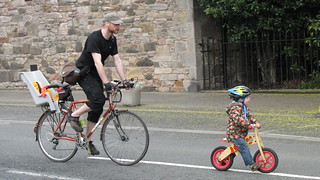"
But he said it was expected that traffic would be able to continue using the bridge – a vital route through the city centre – while repairs were carried out.
"
CityCyclingEdinburgh was launched on the 27th of October 2009 as "an experiment".
IT’S TRUE!
CCE is 16years old!
Well done to ALL posters
It soon became useful and entertaining. There are regular posters, people who add useful info occasionally and plenty more who drop by to watch. That's fine. If you want to add news/comments it's easy to register and become a member.
RULES No personal insults. No swearing.

"
But he said it was expected that traffic would be able to continue using the bridge – a vital route through the city centre – while repairs were carried out.
"
North Bridge is painted in the same colours as the bridges on the Union Canal.
Blue signified the water of the canal.
Black for the coal the canal was intended to convey.
Red was the blood of the labourers spilled in its construction.
Gold was the expected riches the canal would bring.
They got the first 3 right.
"Gold was the expected riches the canal would bring"
Probably did for a while.
Extracts of a book about Telford on R4 this week.
Today's episode was about the beginning of the railway age.
Affected canal owners and turnpike trusts.
The later overtaxed the 'new future' steam carriages - which Telford was keen on and even expected to see 'express roads' for them. But apart from technical/boiler/safety problems, there wasn't much chance of competing on speed.
So the railways mostly took over for more than 100 years.
@kaputnik - thanks for that, really interesting!
I wonder if the repairs will strengthen North Bridge enough for it to be able to bear the weight of a tram or two?
"Blue signified the water of the canal."
I think that would always have been a pretty post-fact description of canal water...
there wasn't much chance of competing on speed
So poor was the passenger service provided in the initial years of the Edinburgh & Glasgow Railway, it could almost be bested by a horse-drawn stagecoach and such a service was offered as being far more comfortable to the paying punter. E&G 2nd and 3rd class carriages had benches and roofs (but no glazing) for the former and no benches and no roofs for the latter. Also, initially the platforms at Queen Street in Glasgow were too short and trains backed up into the tunnel. Passengers had to walk up the tunnels to get to their carriages!
The coming of the railways also reduced the quality of the postal service between the two cities. At this time, much of the evening post was legal and business documents. Clerks would carry these letters to their masters houses in the New Town to be signed and sealed, but this took place after dinner, as business did not get in the way of dining and entertaining. They would then be put on a night time stagecoach and arrive in their destination city by dawn the next day.
The railway largely killed off the stagecoach business, but refused to offer a service after (I think) 7PM. The great and the good of Edinburgh were slow to mend their business ways, which meant that the evenings post had to wait until the next train in the morning to go to its destination and therefore arrived at the lunch table, not the breakfast table. The Royal Mail refused to finance an evening mail train because they felt it would make the penny post unviable. They eventually paid for a horse gig to carry the evening mail between Edinburgh and Glasgow by road. It took a number of years for the railway and business practices to catch up with the times and bend to a mutually agreeable evening mail collection and service.
You must log in to post.

 Cycling in Edinburgh Flickr group
Cycling in Edinburgh Flickr group
Video embedded using Easy Video Embed plugin